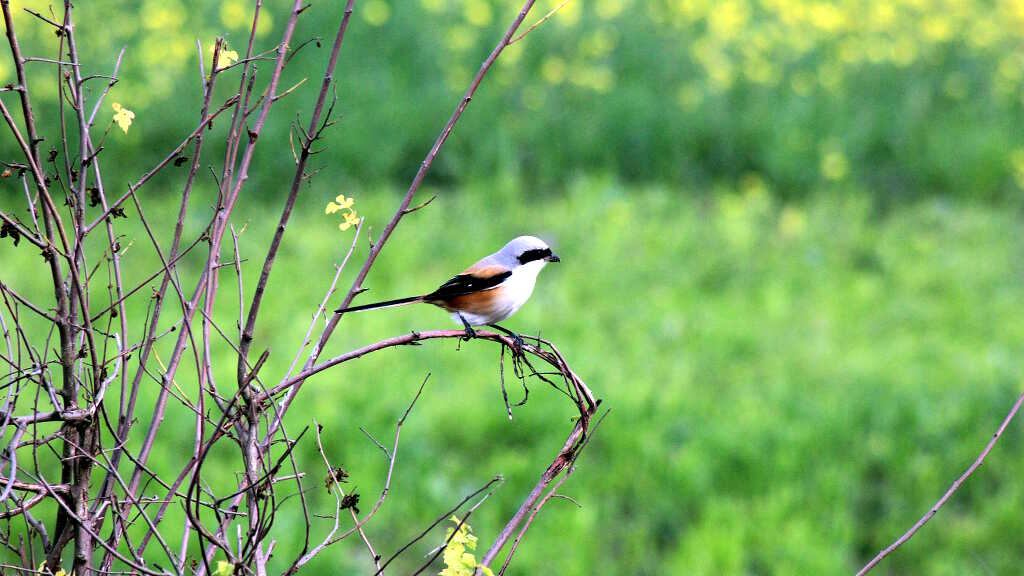
Lanius schach (Long tailed shrike)
The long-tailed shrike (Lanius schach) is a striking and vigilant passerine bird found across a variety of habitats, including forest edges, grasslands, and farmlands. Within the Great Himalayan National Park (GHNP), this bird is most commonly observed in the lower altitudinal zones, particularly in open woodlands and cultivated clearings where it can perch and scan for prey. Its characteristic long black tail and bold mask make it easy to identify and a favorite among birdwatchers.
| Common name | Long tailed Shrike |
| Scientific name | Lanius schach |
| Family | Laniidae |
| Description | Shrikes are noisy birds with black face-masks and hook-tipped bills. They are birds of open habitat that perch on exposed vantage points from where they hunt. The Long-tailed Shrike is a large shrike, with a combination of light-grey upper back and rufous lower back and flanks. It is a particularly aggressive and greedy creature. It is migrant bird and migrated below 2200m during winters. It breeds in an altitude of 3500m. |
Appearance and Behavior
The long-tailed shrike is medium-sized with a sleek body, rufous flanks, and a distinctive black facial mask that stretches from the beak across the eyes. Its back is greyish, and the wings and tail are contrastingly darker. As an expert predator, it often perches on exposed branches or wires, from where it hunts insects, lizards, and even small birds.
Notoriously known as the “butcher bird,” this shrike often impales its prey on thorns or barbed wire—a behavior that aids in food storage and tearing.
Habitat in GHNP
Though not restricted to forests, the long-tailed shrike thrives in the semi-open habitats around the Sainj and Tirthan valleys. Its adaptability allows it to coexist near human settlements and in natural clearings, making it a visible part of GHNP’s avifauna year-round.
Conservation Status
The species is currently listed as Least Concern, but like all birds, it depends on a healthy balance of vegetation, prey populations, and nesting sites. Its regular presence in GHNP indicates the park’s rich biodiversity and relatively undisturbed lower zones



